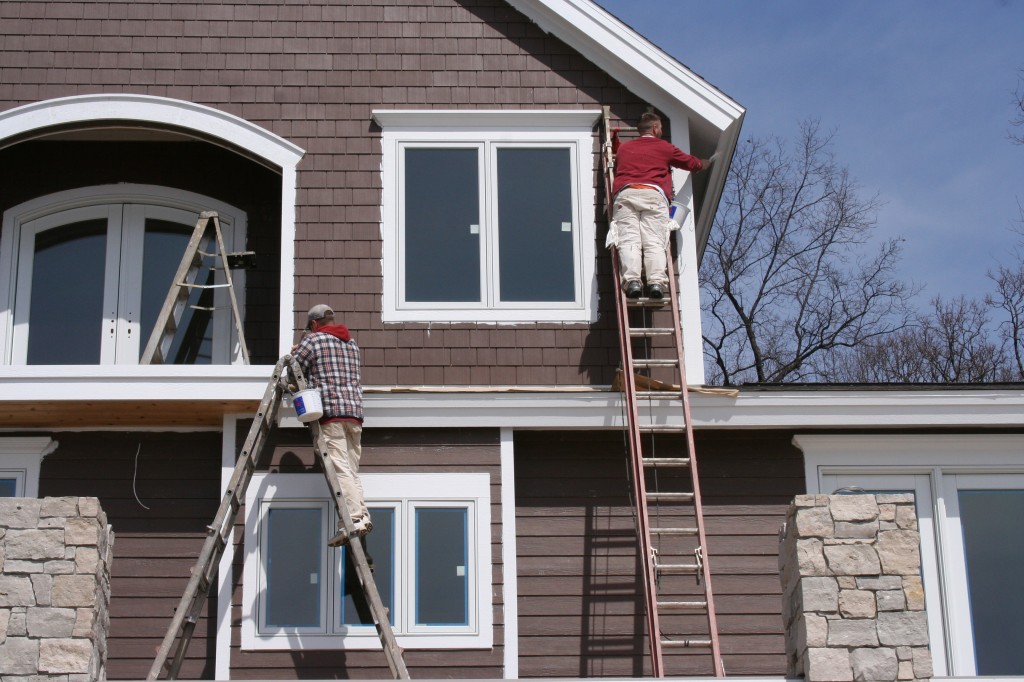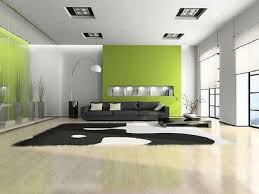
Saturday, 13 December 2025 |

Saturday, 13 December 2025 |

Painting Ideas ... Everything you've always wanted to know about paint color in one place.
Painting not only enhances the visual appeal of your surrounding but also protects and prolongs the life of the surface that has been painted. Wall surfaces chip and crack, metals corrode, while wooden items get bruised and get old. Applying paint is an excellent way to hide structural flaws and eyesores. With today’s technology, paints come with variable properties providing special safeguards to otherwise uncovered surface. And undoubtedly, painting your home is associated with a feast of colours, with thousands of shades to explore from; you can give your home an appeal unique to your personality, to your favourite season or to your favourite memory.
The interior design ideas you need are here, waiting to be discovered. Our inspirational designs are a series of room makeovers created to stir your imagination. You can use part, or all of our room painting ideas, or maybe just use the inspiration to come up with a whole new approach of your own. It's your space. Transform it with your own personal sense of style.
Painting is the practice of applying paint, pigment, color or other medium to a surface (support base). The medium is commonly applied to the base with a brush but other implements, such as knives, sponges, and airbrushes, can be used.
Painting can help you change the look of a room from dull to brand new, oil based paint is more durable, but it takes longer to dry, gives the room paint smell, turpentine is a scares resource and environmentally not good. Paint comes in a number of different finishes from flat to high gloss.
There is no true economy in buying cheap paint. Always buy the best quality paint you can afford. When you choose color from pallet, remember that the color on the wall will be more intense than it appears on the pallet because the area is much larger. If you’re working on unfinished walls, be sure to apply a coat of primer, before you begin painting.

Painting the exterior of a house can be a demanding job. But one can save a lot of work by preparing properly for the project. Determine the color & type of paint you want to use. We provide recommended color combination & sample books to show you what colors look good together. If you’re having a hard time making up your mind, we provide small packing of paint to create samples available in our company for easier comparison. The color you choose should fit in with the rest of the house in your neighborhood.
Mostly latex paint is better because it is easier to clean & lasts longer. Purchase only the best paint since labour cost is all the same. Before you begin to paint, the surface of the wall should be clean, dull & dry, wash off any chalk, dirt & mildew. After cleaning the house, scrape off peeling or cracked paint, then sand and prime the area. When you’re finished priming, begin to paint exterior latex paint. The brush used is almost as important as the paint itself. Pay attention to the temperature. For best result, paint on the day with low humidity at temperature when it is 35o C. Follow the shade so that your fresh paint isn’t exposed to direct sunlight

Ensure the walls & ceiling surface are sound, clean dry, free from dirt, grease or any other contamination. Apply Areva Paints primer & under coat, this will enable you to achieve an even finish & enhance the intensity of the top coat.
Apply wall & ceiling Prime & under coat as follows. When applying over a porous surface, mix it with upto 20% water to make a diluted coat. This will seal the surface & promote adhesion.
Currently there is a wide range of paints available on the market, knowledge the bases, characteristics and properties of each family of paints, allow us to make the optimal decision in the selection of paints based on technical and economic requirements required by the job.
Among the various forms of grouping families of paints available today, we can cite the following classifications:
The primers are the first layers of paint applied on the surface, the primers are designed and formulated to protect the surface against oxidation and corrosion and to be the basis for a good anchorage and adhesion for subsequent layers of paint.
Sealants are the layers of paint that are located between the primers and topcoats, are generally used when apply putty, to seal and isolate putty to finish coat as well as improve adherence and support for the following layers of paint.
Topcoats refer to the entire set of paints that are used to colour the surface, are paints which are to be resistant to abrasion, ultraviolet light, chemicals, moisture, etc. ... due that kind of paints are in direct contact with the outside.
The paints are designed according to the sector which will go, for example primers used in the automotive sector are totally different from the primers used in the manufacture of ships, due to the different functional requirements (the paints of ships must be very resistant to humid environments and extremely saline) and the different materials on which the paint is applied (cars widely used aluminium and plastics of different compositions, while ship used primarily steel).
Direct paint are those paints that are applied directly on the material or substrate, these paints offer some resistance to both oxidation and ultraviolet radiation and other external agents, providing directly the colour, gloss and aesthetic finish.
Monolayers paints are known to the classical application of 2 coats of paint, primer plus enamel, the primer layer protects the material from oxidation and corrosion and promotes adhesion of the next layer of paint, the top layer commonly called enamel or direct gloss is provided by the colour, gloss and resistance to light and environmental agents.
Bilayers correspond to the paint coating system consisting of three layers, primer plus basecoat plus varnish, in this case the final finish is achieved by means of two different layers, basecoat is the first layer that provides colour and metallic effect, final transparent varnish layer provides gloss and protection against external agents.
Finally we found trilayers paints, in which the paint application system consists of 4 layers, the first coat of primer and the last 3 layers correspond to the finish, with the latter three layers is achieved pearlescent or chameleon effects (colour change depending on the light incidence and the angle at which we see), this type of paints are used primarily in tuning automotive sector.